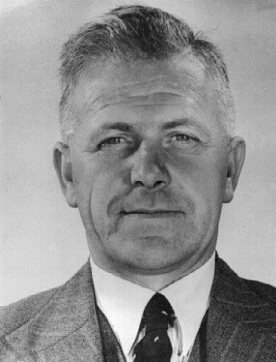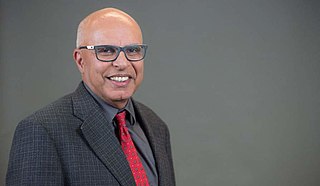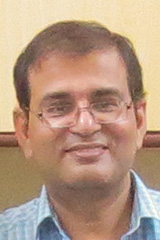
George Bernard Dantzig was an American mathematical scientist who made contributions to industrial engineering, operations research, computer science, economics, and statistics.
Operations research, often shortened to the initialism OR, is a discipline that deals with the development and application of analytical methods to improve decision-making. The term management science is occasionally used as a synonym.

Leonid Vitalyevich Kantorovich was a Soviet mathematician and economist, known for his theory and development of techniques for the optimal allocation of resources. He is regarded as the founder of linear programming. He was the winner of the Stalin Prize in 1949 and the Nobel Memorial Prize in Economic Sciences in 1975.
John Dutton Conant Little is an Institute Professor at the Massachusetts Institute of Technology best known for his result in operations research, Little's law.
Charles West Churchman was an American philosopher and systems scientist, who was Professor at the School of Business Administration and Professor of Peace and Conflict Studies at the University of California, Berkeley. He was internationally known for his pioneering work in operations research, system analysis and ethics.

The Environmental Research Institute of Michigan (ERIM) was a research institute at Ann Arbor, Michigan, founded in 1972. The institute contributed to the development of remote sensing, radar, and holography. ERIM grew out of a military and environmental research arm of the University of Michigan, the Michigan Aeronautical Research Center, later known as the Willow Run Research Center.
Merrill Meeks Flood was an American mathematician, notable for developing, with Melvin Dresher, the basis of the game theoretical Prisoner's dilemma model of cooperation and conflict while being at RAND in 1950.

David M. Maddox is a retired United States Army four-star general who served as Commander in Chief, United States Army Europe/Commander, Central Army Group from 1992 to 1993 and Commander in Chief, United States Army Europe from 1993 to 1994. He commanded the 2nd Armored Cavalry Regiment from 1981 to 1983. He is a 1960 graduate of Virginia Military Institute. He received his Master of Science in Applied Science from Southern Illinois University in 1969.
George Elbert Kimball was an American professor of quantum chemistry, and a pioneer of operations research algorithms during World War II.
Lisa Bonder, also known as Lisa Bonder-Kreiss or Lisa Bonder-Kerkorian, is an American former professional tennis player. During her career, she won four singles titles on the WTA circuit and reached a highest ranking of No. 9 in August 1984.

Sir Leslie Harold Martin, was an Australian physicist. He was one of the 24 Founding Fellows of the Australian Academy of Science and had a significant influence on the structure of higher education in Australia as chairman of the Australian Universities Commission from 1959 until 1966. He was Professor of Physics at the University of Melbourne from 1945 to 1959, and Dean of the Faculty of Military Studies and Professor of Physics at the University of New South Wales at the Royal Military College, Duntroon, in Canberra from 1967 to 1970. He was the Defence Scientific Adviser and chairman of the Defence Research and Development Policy Committee from 1948 to 1968, and a member of the Australian Atomic Energy Commission from 1958 to 1968. In this role he was an official observer at several British nuclear weapons tests in Australia.

Marie-Elisabeth Lucienne Paté-Cornell,, is a Stanford University Professor in the Department of Management Science and Engineering and was the Founding Chair of the Department.

George Lann Nemhauser is an American operations researcher, the A. Russell Chandler III Chair and Institute Professor of Industrial and Systems Engineering at the Georgia Institute of Technology and the former president of the Operations Research Society of America.
William Wager Cooper was an American operations researcher, known as a father of management science and as "Mr. Linear Programming". He was the founding president of The Institute of Management Sciences, founding editor-in-chief of Auditing: A Journal of Practice and Theory, a founding faculty member of the Graduate School of Industrial Administration at the Carnegie Institute of Technology, founding dean of the School of Urban and Public Affairs at CMU, the former Arthur Lowes Dickinson Professor of Accounting at Harvard University, and the Foster Parker Professor Emeritus of Management, Finance and Accounting at the University of Texas at Austin.

John Austin White Jr is an American academic who was the fourth chancellor of the University of Arkansas. He succeeded Daniel Ferritor in 1997 after previously serving as the dean of Georgia Institute of Technology's College of Engineering. As chancellor, White transformed the University of Arkansas; including the $1 billion "Campaign for the 21st Century" capital campaign, which created the University of Arkansas Honors College, endowed the University of Arkansas Graduate School and UA Libraries, added 132 tenured faculty, 1738 scholarships and fellowships, funded millions of dollars of brick and mortar improvements, and grew the university by almost every academic statistic. Since his departure from the chancellor's office in 2008, White has remained at the university, teaching in the industrial engineering department.

Rajan Batta is an American operations research scientist, and a SUNY Distinguished Professor at University at Buffalo. Batta earned his doctorate in Operations Research in 1984 from Massachusetts Institute of Technology and is a member of University at Buffalo faculty beginning in 1984. He also has had several administrative appointments, including Chair of the Department of Industrial and Systems Engineering, Interim Dean, and Associate Dean in various capacities of the School of Engineering and Applied Sciences (SEAS) at the University at Buffalo (UB). At present, he serves in the role of Associate Dean for Faculty Affairs and Recognition.
Digvijai Singh was an Indian mechanical engineer and a former vice chancellor of the University of Roorkee before its reconstitution as the Indian Institute of Technology, Roorkee. He was also a former vice chairman of the All India Council for Technical Education (AICTE) and a former director of Central Road Research Institute. He is known for his studies on dynamics of single track vehicles and Fluid film lubrication and was an elected fellow of all the three major Indian science academies viz. Indian National Science Academy, Indian Academy of Sciences, and the National Academy of Sciences, India as well as the Indian National Academy of Engineering. The Council of Scientific and Industrial Research, the apex agency of the Government of India for scientific research, awarded him the Shanti Swarup Bhatnagar Prize for Science and Technology, one of the highest Indian science awards for his contributions to Engineering Sciences in 1978.

Subhasis Chaudhuri is an Indian electrical engineer and former director at the Indian Institute of Technology, Bombay. He is a former K. N. Bajaj Chair Professor of the Department of Electrical Engineering of IIT Bombay. He is known for his pioneering studies on computer vision and is an elected fellow of all the three major Indian science academies viz. the National Academy of Sciences, India, Indian Academy of Sciences, and Indian National Science Academy. He is also a fellow of Institute of Electrical and Electronics Engineers, and the Indian National Academy of Engineering. The Council of Scientific and Industrial Research, the apex agency of the Government of India for scientific research, awarded him the Shanti Swarup Bhatnagar Prize for Science and Technology, one of the highest Indian science awards, in 2004 for his contributions to Engineering Sciences.
Laura Albert is a professor of Industrial and Systems Engineering at the University of Wisconsin-Madison in the College of Engineering. Albert is an expert in Operations Research, specializing solving and modeling discrete optimization problems arising from applications in homeland security, disaster management, emergency response, public services, and healthcare.
Panos (Panagiotis) Kouvelis is the Emerson Distinguished Professor of Supply Chain, Operations, and Technology and director of The Boeing Center for Supply Chain Innovation at the Olin Business School at Washington University in St. Louis. He is best known for his work on supply chain management, supply chain finance, operational excellence, and risk management.









